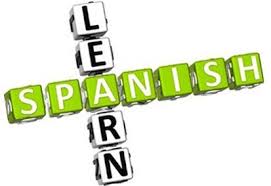Immersion programs to Learn Spanish
The problem inquired most frequently in research on language immersion instruction is pupils’ ability to do on standardized tests. This question emerges again and again in direct response to stakeholder concerns that growth of a language besides English not endanger education aims that are fundamental, elevated rates of written and oral communication abilities in English, and grade-appropriate academic accomplishment. English expert concentration pupils are effective at attaining at the same time as, as well as in a number of instances non-immersion peers on standardized measures of reading and mathematics.
Despite the fact that a large proportion of studies have been performed in Spanish/English settings, Dr. Kathryn Lindholm-Leary recently reported results from a study of two Chinese/English plans. The findings of Leary align with those of other Spanish learning plans.
Language and Literacy
Teachers believe that more than one language is now days needed for children’s future economic and societal prosperity. Immersion students who start an immersion program to learn Spanish consistently develop native-like degrees of comprehension, including listening and reading abilities, within their second language. In addition they show fluency and self-confidence when using it. Additionally, the more time spent learning during the non-English language, the larger the degree of competence achieved. To date, early total (one way) and almost complete (90:10) two way immersion programs exhibit higher levels of minority language ability than partial or fifty-fifty programs.
First concerns in regards to the potential detriment to literacy development and English language were laid to rest. English-expert concentration pupils who reached comparatively elevated rates of second language ability additionally obtained higher degrees of metalinguistic knowledge and English language abilities –that’s, the capacity to take into account how various elements of a language function. But, we also have signs that educational time invested in acquiring significant decoding sub-abilities within an immersion student’s second language help and can transfer decoding sub-abilities in their very first language.
Research regarding the connection between character-based and English literacy sub-abilities is growing. As an example, if Spanish students and Spanish proficients are assessed using standardized Spanish-medium tools, Spanish students are outperformed by Spanish proficients. Similar consequences happened when evaluations were given in English and Mandarin.
Dr. Kim Potowskii found that the verbal and written language abilities of English students in the study were just somewhat behind those of recent Spanish-speaking entrances and significantly better than their English-proficient peers. English students’ ability levels that were bilingual may also be linked to higher rates of reading achievement in English, academic language proficiency that was raised, and successful school experiences generally.
We an conclude that an Immersion program to Learn Spanish not only accelerates the rate at which you can learn this new language but it also will help you develo other skills.









Recent Comments